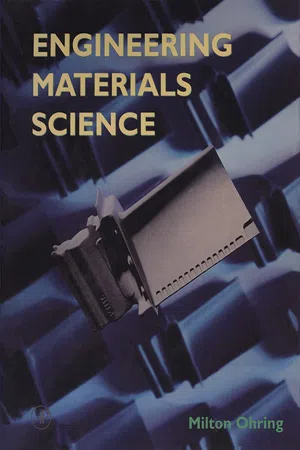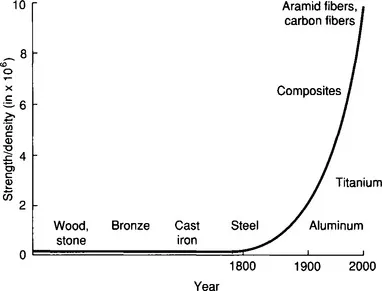
- 827 pages
- English
- ePUB (mobile friendly)
- Available on iOS & Android
Engineering Materials Science
About This Book
Milton Ohring's Engineering Materials Science integrates the scientific nature and modern applications of all classes of engineering materials. This comprehensive, introductory textbook will provide undergraduate engineering students with the fundamental background needed to understand the science of structure-property relationships, as well as address the engineering concerns of materials selection in design, processing materials into useful products, andhow material degrade and fail in service. Specific topics include: physical and electronic structure; thermodynamics and kinetics; processing; mechanical, electrical, magnetic, and optical properties; degradation; and failure and reliability. The book offers superior coverage of electrical, optical, and magnetic materials than competing text.The author has taught introductory courses in material science and engineering both in academia and industry (AT&T Bell Laboratories) and has also written the well-received book, The Material Science of Thin Films (Academic Press).Key Features* Provides a modern treatment of materials exposing the interrelated themes of structure, properties, processing, and performance* Includes an interactive, computationally oriented, computer disk containing nine modules dealing with structure, phase diagrams, diffusion, and mechanical and electronic properties* Fundamentals are stressed* Of particular interest to students, researchers, and professionals in the field of electronic engineering
Frequently asked questions
Information
INTRODUCTION TO MATERIALS SCIENCE AND ENGINEERING
1.1 MATERIALS RESOURCES AND THEIR IMPLICATIONS
1.1.1 A Historical Perspective


1.1.2 The Materials Cycle
Table of contents
- Cover image
- Title page
- Table of Contents
- Inside Front Cover
- Copyright
- Dedication
- PREFACE
- ACKNOWLEDGMENTS
- Chapter 1: INTRODUCTION TO MATERIALS SCIENCE AND ENGINEERING
- Chapter 2: ELECTRONS IN ATOMS AND SOLIDS: BONDING
- Chapter 3: STRUCTURE OF SOLIDS
- Chapter 4: POLYMERS, GLASSES, CERAMICS, AND NONMETALLIC MIXTURES
- Chapter 5: THERMODYNAMICS OF SOLIDS
- Chapter 6: KINETICS OF MASS TRANSPORT AND PHASE TRANSFORMATIONS
- Chapter 7: MECHANICAL BEHAVIOR OF SOLIDS
- Chapter 8: MATERIALS PROCESSING AND FORMING OPERATIONS
- Chapter 9: HOW ENGINEERING MATERIALS ARE STRENGTHENED AND TOUGHENED
- Chapter 10: DEGRADATION AND FAILURE OF STRUCTURAL MATERIALS
- Chapter 11: ELECTRICAL PROPERTIES OF METALS, INSULATORS, AND DIELECTRICS
- Chapter 12: SEMICONDUCTOR MATERIALS AND DEVICES: SCIENCE AND TECHNOLOGY
- Chapter 13: OPTICAL PROPERTIES OF MATERIALS
- Chapter 14: MAGNETIC PROPERTIES OF MATERIALS
- Chapter 15: FAILURE AND RELIABILITY OF ELECTRONIC MATERIALS AND DEVICES
- APPENDIX A: PROPERTIES OF SELECTED ELEMENTS (AT 20°C)
- APPENDIX B: VALUES OF SELECTED PHYSICAL CONSTANTS
- APPENDIX C: CONVERSION FACTORS
- ANSWERS TO SELECTED PROBLEMS
- INDEX
- DOCUMENTATION FOR ENGINEERING MATERIALS SCIENCE COMPUTER MODULES